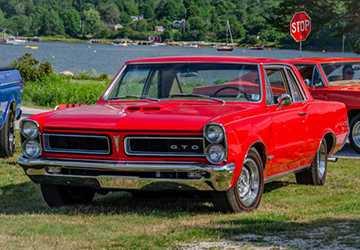Have you ever wondered if that old car covered in dust at your neighbour's house could be a rare gem worth a fortune?
As vintage car enthusiasts, we constantly daydream about uncovering a diamond-in-the-rough classic car that no one else recognizes.
Do you remember the adrenaline rush of treasure hunts as a kid? The allure of discovering something valuable that others overlooked?
Imagine coming across a rare 1960s Ferrari or a classic Mercedes Gullwing worth millions, tucked away long-forgotten.
But are you looking in the right places? Do you recognize valuable models? Do you need to gain insider knowledge? We want to equip you for your dream automotive treasure hunt adventure!
We'll share five insider tips to help you identify valuable vintage cars waiting to be discovered and restored to their former glory.

Your Ultimate Automotive Treasure Hunt
Hidden gems in vintage car markets refer to rare, valuable classic vehicles that most people overlook. Identifying them early lets you rescue coveted cars others dismiss as beaters and make a fortune restoring them to their former glory.
Spotting these diamonds in the rough takes insider knowledge but pays off enormously when you rediscover a forgotten 1960s60's Ferrari worth millions!
Here are five tips to identify hidden gems in vintage car markets:
1.The Thrill of the Hunt Haunts Your Dreams
The lure of finding a coveted muscle car, such as a 1964 Pontiac GTO or a 1955 Mercedes 300SL Gullwing abandoned in a barn, keeps many vintage car lovers up at night.
We've all seen those stories about people stumbling upon million-dollar Barn Finds.
The potential to rescue a beautiful sports car that could appreciate tremendously after a complete restoration is fascinating.
Of course, those six—and seven-figure barn finds are exceptionally rare. But there are still deals if you educate your eye about valuable models and know where to look.
2.Learn to Recognize Valuable Models
The first step is to study collectors' cars from the 50s, 60s, and 70s in high demand.
Muscle cars, vintage European sports cars, and iconic luxury vehicles tend to be very popular with car collectors because of their racing pedigree and attractive styling.
For example, 1950s Mercedes 300SL Gullwings, 1960s Ford GT40s, and 1970s Ferrari Daytonas are blue-chip collector cars that would make any enthusiast weak in the knees to discover neglected in a garage.
Learn how to identify these prestigious models on sight, even if they are caked in dust and missing parts. The right car underneath all that grime could finance your retirement.
3.Search Off the Beaten Path
Instead of only scanning crowded classic car auctions and dealerships, venture into small towns and rural areas where older cars are more common. Check local classified ads and online marketplaces for leads in your extended area.
With some detective work and networking with local car enthusiasts, you may discover vintage cars that have been parked for decades and are just waiting to be discovered.
Knock on doors, start conversations at coffee shops, and follow up on vague leads. Be willing to get your hands dirty while unearthing neglected vintage cars.
Tracking hidden gems in barns, sheds, yards, and garages takes dedication, creativity and a tolerance for disappointment. But the Eureka moment when you rescue a coveted classic car makes it all worthwhile.

4.Verify Provenance and Numbers Matching
Once you've located an intriguing vintage car, it's essential to determine the provenance and confirm it has numbers matching. Provenance details the ownership history - you'll want documentation confirming the originality.
Numbers matching means the VIN, engine number, transmission, and rear axle should match what was initially installed based on factory records.
Mismatched numbers or murky provenance severely hurts value. However, a rare bird with ironclad provenance and matching numbers could make a compelling restoration candidate.
5.Assess Restoration Potential
A show-quality restoration is costly, so you must realistically assess the cost of restoring the car to its former glory.
Are the necessary parts available, or will custom fabrication be required? Can the engine be rebuilt, or does it need to be replaced? Will the bodywork and paint be straightforward or require extensive repairs?
Arm yourself with restoration knowledge to deduce which projects are worth taking on—factor in the market value post-restoration versus the costs to buy and restore the car. High-demand collector cars often merit full restorations.
More common classics may be better served by a mechanical refresh and tidy-up rather than an expensive frame-off overhaul. Let your expertise guide investment decisions.
Spark Your Passion and Start the Hunt
Now that you've been given expert tips from our vintage car specialists, it's time to start your exciting search for hidden gems.
Apply the lessons you've learned here about identifying valuable models, verifying provenance, assessing restoration costs, and recognizing Diamonds in the Rough.
It will all be worth it when you rescue a beautiful 1960s Italian sports car from a condemned garage forgotten for decades. Happy treasure hunting!





